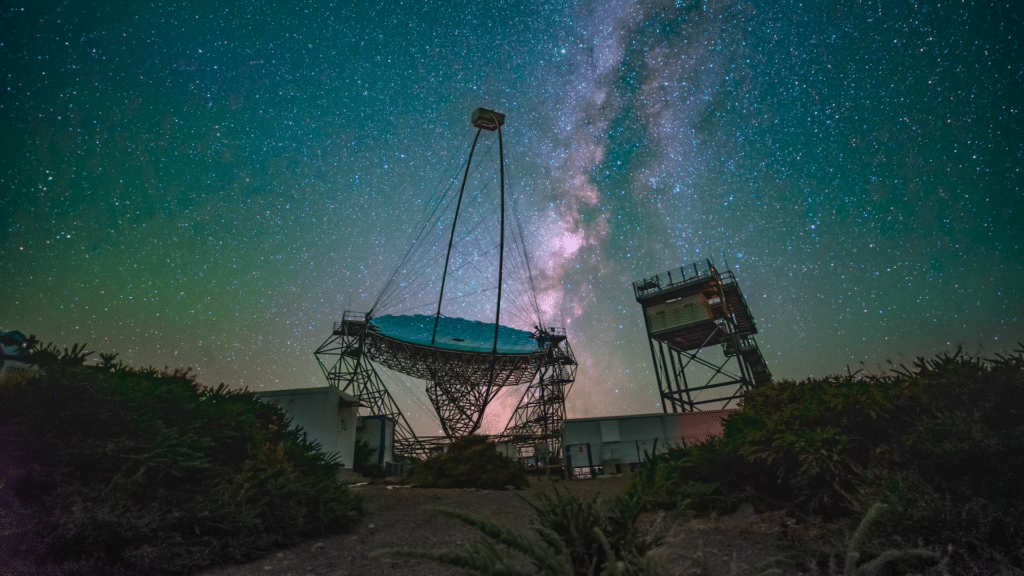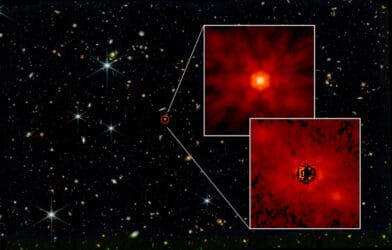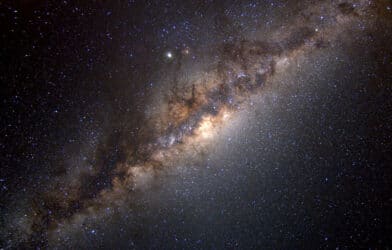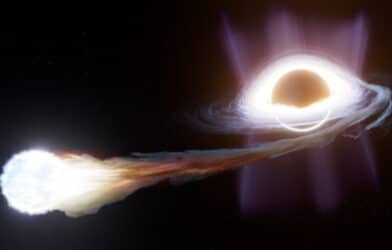Astronomers with the Large-Sized Telescope (LST) Collaboration are celebrating a milestone discovery that’s making waves in the scientific community. They have detected a cosmic phenomenon known as OP 313, a colossal energy source in a distant galaxy, using their cutting-edge telescope LST-1. This remarkable achievement not only marks the LST-1’s first major discovery but also positions OP 313 as the most distant object of its kind ever spotted by a Cherenkov telescope.
Before delving further, it’s essential to understand what a Cherenkov telescope is. This type of telescope is designed to detect very high-energy radiation — specifically, gamma rays. It does this not by observing the gamma rays directly but by detecting the brief flashes of visible light (known as Cherenkov radiation) created when these gamma rays interact with the Earth’s atmosphere. This innovative method allows astronomers to study cosmic phenomena that emit extremely high-energy radiation, which is otherwise difficult to capture.
What is OP 313?
So what is this energy source dubbed OP 313? It’s a Flat Spectrum Radio Quasar (FSRQ) – a type of Active Galactic Nucleus (AGN). AGNs are incredibly bright regions at the center of some galaxies. They are powered by supermassive black holes that consume vast amounts of material, creating a brilliant display of light and particles traveling at nearly the speed of light. Imagine a cosmic lighthouse, but much, much brighter and more powerful.
Why is This Discovery Significant?
This discovery is groundbreaking for several reasons. First, OP 313 has been detected at energies above 100 Gigaelectronvolts (GeV). To put that in perspective, this energy level is a billion times higher than the visible light we can see. It’s like comparing the light from your smartphone screen to a vast array of nuclear power plants.
OP 313 is not just any FSRQ. It’s now known as the most distant AGN ever detected by a Cherenkov telescope, located about 8 billion light-years away. That’s so far that the light we’re seeing from it started its journey when the Earth was just over half its current age.
Detecting such distant objects is incredibly challenging due to something called the Extragalactic Background Light (EBL). EBL is the accumulated light from all objects outside our Milky Way galaxy. It spreads across various wavelengths, from visible light to infrared and ultraviolet. When high-energy gamma rays, like those from OP 313, travel through the EBL, they lose energy, making them harder to detect. The LST-1’s design, optimized for detecting lower energy gamma rays, played a crucial role in this discovery.
The Future of Cosmic Exploration
The LST Collaboration, comprised of over 400 scientists and engineers from 67 different institutions across 12 countries, plans to continue observing OP 313 to gather more data and refine their understanding of cosmic phenomena like the EBL. This will not only shed light on the mysterious workings of such distant AGNs but also help us understand fundamental aspects of intergalactic physics and cosmic magnetic fields.
In simpler terms, think of it as unlocking the secrets of the universe’s most enigmatic and distant lighthouses, helping us understand more about the vast cosmic ocean in which we all float. This discovery is not just a testament to human ingenuity and the pursuit of knowledge but a reminder of the incredible universe that lies beyond our blue planet.












